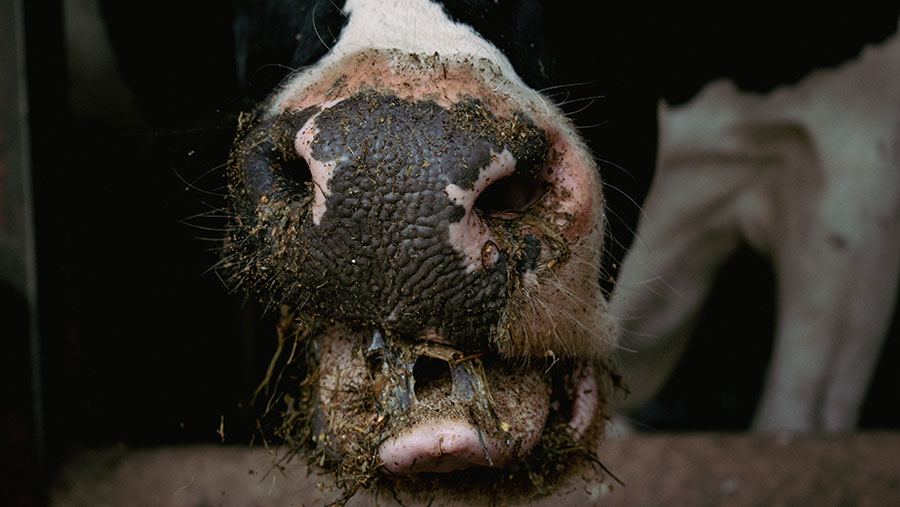Maize silage should feed well despite drought, analysis shows
 © MAG/Charlotte Cunningham
© MAG/Charlotte Cunningham Analysis of nearly 700 samples of maize silage suggest it should feed well this winter and complement this year’s grass silages.
This is according to Liz Homer, ruminant technical development manager at Trouw Nutrition, which analysed the samples.
Despite a challenging season characterised in many parts of the country by drought and extreme temperatures affecting growth rates and cob development, this year’s maize silage compares well with previous years, on average.
See also: How to manage acidosis when feeding multi-cut grass silage
“Dry matter content is higher than for the last few years on average, at 33.9%, almost 2% higher than in 2020 and 2021,” says Dr Homer.
“This, and a larger number of drier crops, reflects the weather, particularly in the second half of the season.
“However, farmers should be mindful as always of the variability within and between samples due to the varied growing season.”
Metabolisable energy (ME) and digestibility (D) value are higher than last year, averaging 11.4MJ/kg dry matter (DM) and 72.4%, respectively (see “Analysis of maize silage samples in 2021 and 2022”).
Starch is 1.7% higher than last year and 5% higher than 2020, at 35% DM.
Starch degradability
While starch degradability is marginally lower than in 2021, at 77.5%, there is a range across the samples, largely dependent on dry matter.
“The combination of higher starch contents and increased digestibility mean this year’s maize has higher levels of fermentable carbohydrates,” explains Dr Homer.
“This will help fire up rumen fermentation overall to help complement the higher fibre grass silage found on many farms this winter, improving overall contribution from forage.
“In addition, the moderate acid load means maize will feed well, with any higher energy early first cut grass or any high acid load grass silages.”
However, starch degradability tends to increase with time in the clamp, increasing acid load and bringing a greater risk of acidosis. This change is more pronounced over time in drier silages, she warns.
Cost savings
“Changes in starch degradability increase energy from rumen fermentation, but also mean that bypass starch is more digestible in the small intestine.
“This means that more energy will be available to the animal, so cost savings can be made by making small tweaks to the ration to account for the extra energy in the maize silage,” says Dr Homer.
“However, with increased starch levels and bypass starch levels, it will be important to ensure rations are not overloading the hind gut with starch.
“Too much fermentable carbohydrate in the rumen and in the hindgut can lead to multiple sources of acidosis, resulting in leaky gut and poor gut health causing an inflammatory response, draining energy from the cow, and resulting in reduced yields.”
She recommends monthly silage analysis so rations can be fine-tuned through the winter.
Analysis of maize silage samples in 2021 and 2022 |
||
|
|
2022 average |
2021 average |
|
Dry matter (DM) (%) |
33.9 |
32.6 |
|
Digestibility value (%) |
72.4 |
70.6 |
|
Crude protein (% DM) |
7.9 |
8.0 |
|
Metabolisable energy (MJ/kg DM) |
11.4 |
11.1 |
|
Starch (%DM) |
35.0 |
33.3 |
|
Starch degradability (%) |
77.5 |
79.4 |
|
Bypass starch (g/kg DM) |
77.6 |
71.4 |
|
NDF (%DM) |
28.1 |
38.1 |
|
Rapidly fermentable carbohydrates (g/kg DM) |
212.7 |
210.2 |
|
Total fermentable carbohydrates (g/kg DM) |
510.6 |
499.0 |
|
Acid load |
46.0 |
45.7 |
|
Fibre Index |
140.8 |
138.7 |
|
pH |
3.8 |
3.84 |
|
Source: Trouw Nutrition |
||
